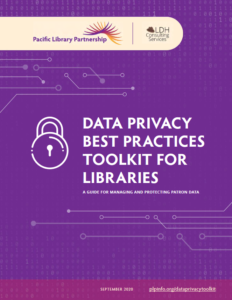
Wouldn’t it be nice if you never had to take another work-mandated training ever again? No more having to block an entire day off to head over to sit in a stuffy windowless room trying to focus on the training slides while all the lights are still on, making the projection barely readable, and you can barely make out what the trainer is saying? Even when you take the pandemic into account, do you really want to sit through a day-long Zoom training session?
If you said no to either question, you’re in good company. Training is either a critical component or a bureaucratic hurdle in the workplace, depending on who you ask. Training quality widely differs from workplace to workplace. Some training sessions are well designed and practical, while others fail. Nevertheless, training serves several critical functions in any organization, including library privacy training:
- Orienting workers to library privacy policies and procedures
- Providing opportunities for practicing specific procedures or skills in a controlled environment through the use of scenarios and other exercises
- Ensuring a baseline knowledge of library privacy codes, ethics, and standards
- Developing new or updating existing knowledge or skills around protecting patron privacy
Privacy protections are only as strong as those who have the least amount of knowledge about those protections. Lack of training or undertraining library workers creates additional risks to patron privacy through not following or understanding policy or procedure. Regular up-to-date training of library workers reduces that risk to patrons and library alike.
With that said, training can only do so much in protecting patron privacy. Training is only one part of a comprehensive approach to library privacy. On its own, privacy training – no matter how well-designed – cannot reduce or eliminate all privacy risks. Training alone is ineffective when a tool, policy, or procedure is inherently privacy-invasive. Training will not solve the flawed policy, procedure, or tool – as long as the invasiveness is left unaddressed, you’ll continue to see the same results from said bad design. If there is a process that repeatedly leaks or provides unauthorized access to patron data, for example, and there is no dedicated effort on the part of the library in changing this process, training will not fundamentally address the risk to the fullest extent possible.
You might be thinking that training could bring a library’s attention to the risks of such a process, but this is where we have to confront the uncomfortable truth around privacy training. Library privacy training is only as effective as the lowest number of resources or staff dedicated to protecting patron privacy in library operations. If the library only spends dedicated resources and staff time in creating and conducting privacy training, library workers are left trying to implement what they learned in training without the support needed to have a chance to succeed in reducing privacy risks in their daily work. For example, a library privacy training that teaches library workers to write a privacy policy might produce a policy that the library can then adopt. But what happens afterward? There needs to be support in ensuring that library procedures line up with the privacy policy. The privacy policy also needs to be communicated to patrons – how can a library do that effectively so that patrons can easily access and understand the policy without being given the required time and resources to do the necessary work? Where is the time to review vendor contracts and privacy policies to identify misalignment with the library privacy policy, and how will library workers address these risks with the vendors if they cannot get the time dedicated to this work?
Without the organization’s support, the effectiveness of library privacy training is limited at best. Over-relying on privacy training to protect patron privacy is like waiting to address privacy risks at the end of a project – attempts to mitigate risk will be hampered by a lack of resources and time. It will most likely not solve fundamental issues inherent in the end product’s design. Like Privacy by Design in project management, a privacy program prioritizing privacy in all levels of library operations and services can systematically address these fundamental privacy issues. Unlike training, privacy programs focus on the long term – what resources are needed to embed privacy into every level of library work? How can we build a sustainable relationship with our patrons to address their privacy concerns? How can patrons have more agency in helping with determining how the library does privacy?
Library privacy requires every part of library operations to prioritize privacy. Strong privacy policies, privacy-preserving technologies, vendor contract negotiations and privacy assessments, privacy audits, data inventories – these are only some of the things that libraries need to do to protect patron privacy better. Training is part of that library privacy equation, but without dedicating resources and time to a sustainable library privacy program, training alone cannot protect patron privacy.

